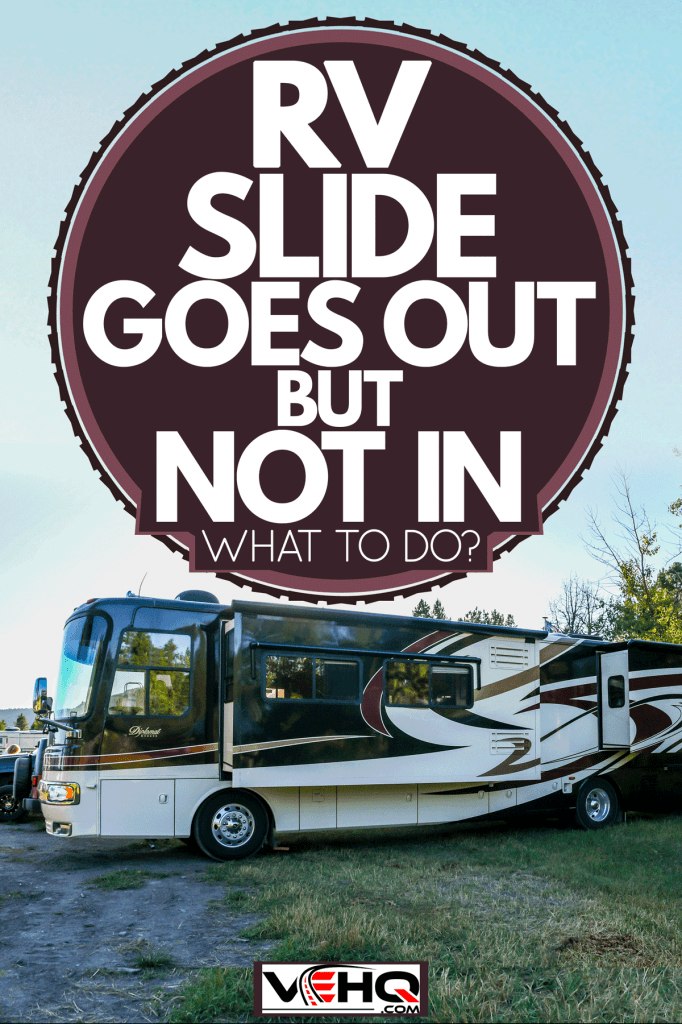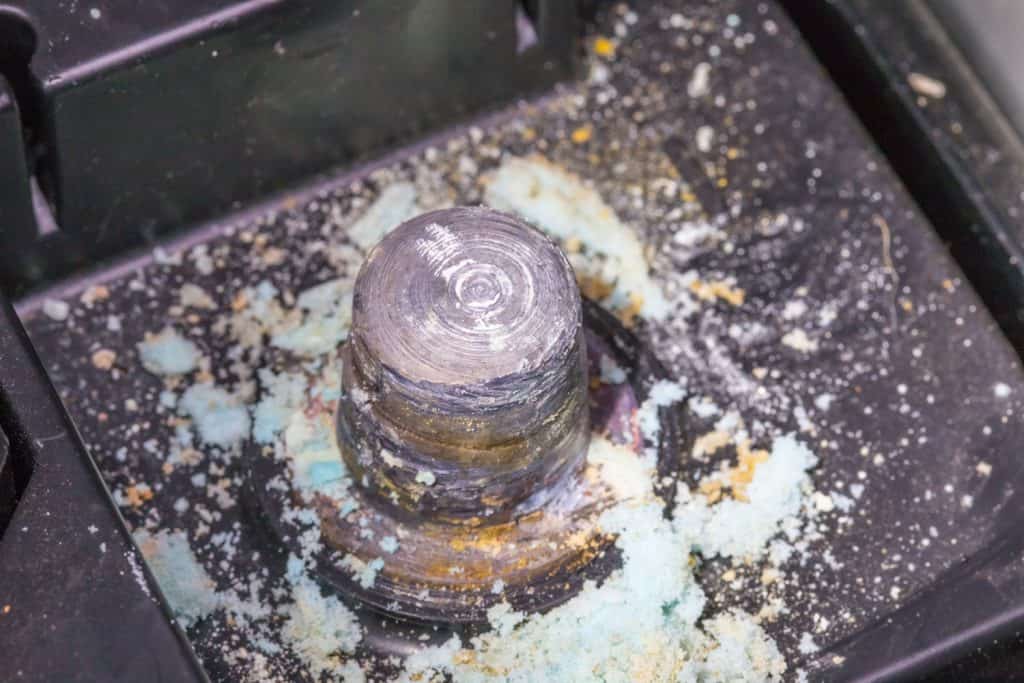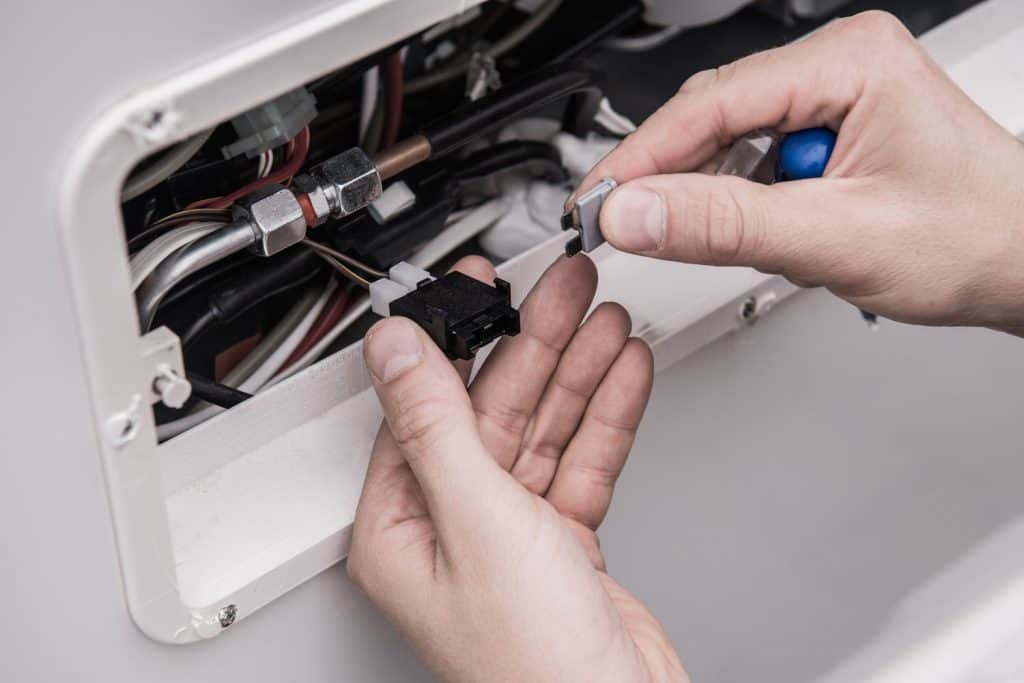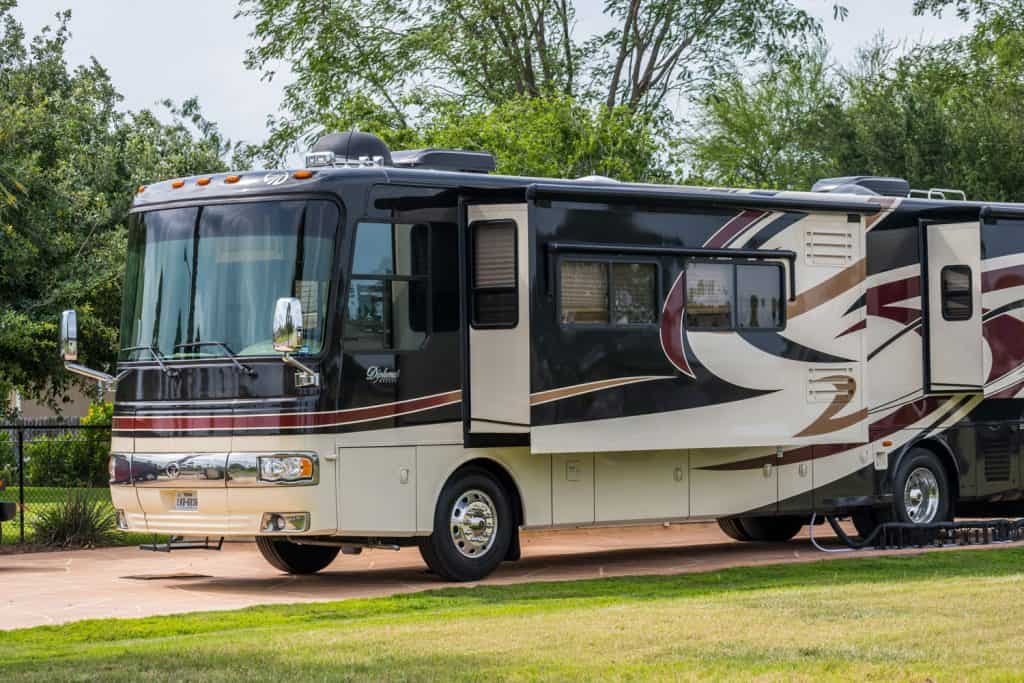If you're needing to retract your RV's slide-out and you're not having any luck getting it to budge, you're right to have some concerns. Leaving your slide-out in the "out" position makes leaving your parking space impossible, and might be a bad idea for long term storage. There could be a good number of reasons why it won't retract. If you're in this position, what do you do? We've researched RVs from a number of professional sources to bring you the answer.
If your RV slide is stuck in the "out" position, it could be for one of any number of reasons. We've listed the most probable causes below:
- Battery issues
- Fuse
- JST connector
- Chewed wiring
- Faulty switch
- Obstructions
Now that we know the most common reasons your RV slide is stuck in the "out" position, we'll go into more detail on each one so that you can properly troubleshoot it. You might also be wondering if you should store the RV with the slide out, or if you're able to manually close the slide. For the answers to these questions and more, read ahead in this post.

Troubleshooting Your RV Slide
In this section, we'll review some great troubleshooting tips regarding your stuck RV slide.
Battery
Battery terminals are known to corrode, which will prevent any charge from leaving the battery itself. Check the battery for any signs of corrosion, and remove it.

Granted, if your battery is the issue, your RV won't start, let alone allow the slide-out to retract. So if your RV starts up, then the battery isn't your issue.
If you want to know more about RV batteries, check out this post: How Long Will An RV Battery Last (Inc. When Dry Camping)?
Fuse
Checking your RV's fuse box is the next logical place to check, should your battery be operational. If you locate a burned out or broken fuse, then you'll know that this has been your problem.
The various fuses in your RV are meant to break should there be an electrical issue, like a power surge. These fuses break so that whatever electricity flowing through that circuit will immediately stop, preventing damage to your box and other electrical components. Whenever you replace any of the fuses, be sure to replace it with a fuse that has the exact same power rating as the original one. If you're unsure of the rating of the fuses, consult with your owner's manual.
If you are finding yourself continually replacing broken fuses, then you might have an underlying electrical issue. It's suggested that you consult with a trusted RV mechanic so that this problem can be identified and remedied before it gets any worse.

JST connector
Your slide-out compartment is connected to its motor with a power cable, specifically a JST cord. Sometimes, when your slide-out is opening and closing, the JST cord will pop out of its socket. Clearly, if the slide-out has no power, it will cease to operate. Check to see that the JST cord is properly attached to both the motor and the slide-out.
Chewed wiring
Parking your RV in storage keeps it protected from the elements, but won't necessarily keep it one hundred percent safe from rodents. And having your RV at campgrounds does the same. While these critters are cute, they do like to chew on things, including wiring.
If your RV slide-out won't operate, it's a good idea to also check the wiring. A thorough inspection will turn up any issues. If you locate any wiring that looks frayed or chewed, it will need to be repaired or replaced before it will operate.
Faulty switch
While a little less than common cause, the switch that controls your slide-out compartment can wear out. One way to test this is if you have multiple slide-outs. If only one of them isn't working, try swapping out the switches. If this makes the one that was originally stuck now operate, then a faulty switch is the problem.
Fortunately, switching out the faulty switch for a new one is easy and inexpensive.
Obstructions
Your RV slide's motor will automatically stop running if it senses any resistance to the moving gears. If any object, no matter how small, has become embedded on the slide track, your slide will not operate. This is to prevent damage to the gears, as well as preventing the motor from burning up.
Carefully inspect the slide track and gears for any obstructions, and remove any that are present.
Will my slide-out work without a battery?
If you're in a position where your battery is dead, but your slide-out needs to retract, what options do you have?
Fortunately, you will be able to use a simple device to manually crank your RV's slide-out back into place. Many models are equipped with a tool called a T-assist handle, which can be inserted onto the slide-out gear mechanism on the motor. Turning the handle clockwise will retract the slide-in slowly and safely.
If your RV isn't equipped to accommodate a T-assist handle, you still have other options. You can always establish a hookup to a generator, which will power your slide-out's motor so that it can be retracted.
If it's available, you can also plug your RV into shore power, which will also allow your slide-in to move back into its stowed position.
Should you store your RV with slides in or out?

When driving past an RV dealer, you've no doubt noticed that the slide-outs are usually in the "out" position. Is this the recommended way to safely store your RV for the season?
It's important to understand that dealers have these slide-outs in this position so that they can better showcase the spaciousness of the various models of RV on their lots. This doesn't mean that they are kept in this position for long periods of time, or that it's safe for them to be stored this way in your garage or barn.
It's recommended to keep the slide-outs in when in storage. Any time the slides are out, you open yourself up for the possibility of leaks. And if your RV is being stored outdoors in a colder climate, it's much harder to properly winterize it unless the slide-outs are firmly in their "in" positions.
How do you lubricate your slide out?
Part of your routine RV maintenance should include lubricating the slide-outs. Doing so will keep this functioning smoothly and efficiently. But how do you do it?
Start by selecting a reputable dry lube, specifically meant for RV slide-outs. Use this on your slide-outs rails and gears. This dry lube will keep any rust, dust, or debris from building up on your parts, and will also remove any damaging moisture. This is so effective that you only need to apply it once per year.
Click here to see this brand of RV dry lube for slide-outs on Amazon.
As for the slide-out seals themselves, many prefer to lightly rub baby powder on them. This keeps the seals clean and lightly lubricated.
Alternately, you can use a lubricator specifically for the seals. This will need to be lightly applied every eight weeks.
Click here to see this brand of RV slide-out seal lubricant on Amazon.
When it comes to lubricating your slide-out's rollers, experts say to avoid any oily lubes. Dry lubricants are definitely recommended here, but check your owner's manual to be absolutely certain that your model RV fits this criterion.
Lastly, use a brand of silicone spray to lube your slide-out's windows. This should only need to be done every few months.
How do you manually close an RV slide out?
If your RV is without power, then your slide-out will need to be manually put back into place.
As we discussed earlier in this post, some models come equipped with a T-assist handle. Attaching this handle to the slide-out gear mechanism will allow you to crank your slide-out into the desired position.
For models without this option, you'll need to consult your owner's manual to locate the access hole that leads to the slide-out motor. You'll attach a wrench and slowly turn the gears until the slide-out is back in place. Certain models will require you to remove the drive motor so that you can push the slide-out back into place.
Should you level your RV with slides out?
Before you make the move to open your RV's slide-out, you might be wondering if your vehicle should be level first. Experts have come to the consensus that it's always best to have your RV properly level before opening any slide-outs.
If you level it after opening the slide-outs, the RV itself might still be uneven. This unevenness can put extra strain on the slide-out's slide mechanism and motor.
In Closing
Your RV's slide-out can be stuck for a number of reasons, most of which are easy to identify and troubleshoot. If you're unable to get your slide out to go back into place with any of the troubleshooting methods that are recommended, you can always manually retract it.
Slide-outs are often spotted in the "out" position on RV sales lots, but shouldn't be stored by owners in this fashion. Doing so makes them more prone to leaks, and also makes it impossible to winterize.
RVs are a great way to see parts of the country that you won't see by staying in hotels. Having a model with a slide-out enhances this experience, but you should know the routine maintenance that is recommended for any slide-outs. This will make your slide-outs run smoother and longer, without additional hassle.
If you found this post on RVs to be helpful, we believe that you'll find the following posts on RVs informative:



For those engaging with hydraulic slideout systems, a critical concern arises with a decline in fluid levels. This often reveals a leak in the system, acting as a barrier against the seamless retraction of the slideout mechanism.